
How to set up your boat trailer to launch and load like a pro.
First you'll need to determine if your trailer is a good candidate to work with. The style of boat trailer on the left, will not work well for anything more than like a 13' aluminum jon boat. The style of trailer on the right, is what you're going to want to start out with. Your keel should be able rest inside the frame rails, with at least three crossmembers that are perpendicular or "not parallel" with the boats keel.

If your current trailer does not qualify as a good candidate, (Be honest wth yourself) then you'll honestly be better off playing some Pacman while you think about how you're going to get yourself a trailer that is going to make a good candidate.
Pacman
Here is an overview of the parts that will need to be adjusted, or installed. Then we'll make our four critical adjustments.
- The bunks (carpeted wood, usually 3" or 4" wide cypress or pine)
- The keel guides (usually 2" x 6" carpeted boards)
- The winch stand (the winch base and the winch post = the winch stand)
- Install upright guide poles (usually square galvanized or round aluminum tubing with PVC covering them)
Adjusting The Bunks
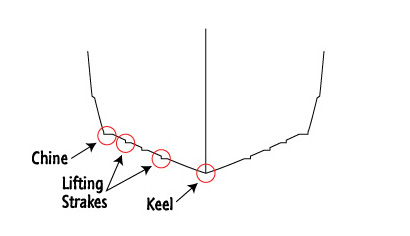
- Remove any keel rollers, guides, or anything else you may have touching the keel.
- Unhook your winch strap from the bow eye, and move the winch stand foreward enough to give you some room.
- Adjust the bunks so the chines on your hull are resting on the bunks. Just like the image below. If your trailer is too narrow to get the bunks under the chines, or if you don't have enough room between the keel and the crossmember to install the keel guides, then its okay to adjust the bunks to rest under the outside set of lifting strakes.
- Right now, the bunks should be supporting the full weight of your hull, and this is how your boat will sit on the trailer.
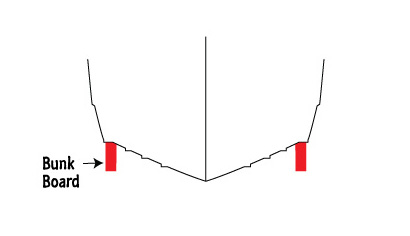
Installing The Keel Guides
- Install the keel guides just like the image below. The keel guides need to be about the lenght of the hull. (Usually longer than the bunks)
- Raise the keel guides up just until they make contact with the keel, it's important not to raise them up to the point where they are supporting the weight of your hull. (The bunks should still be supporting the hull weight)
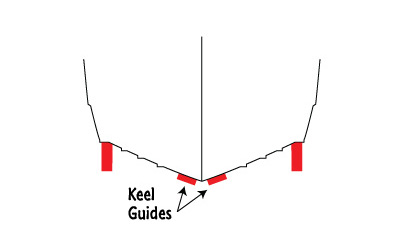
Adjusting The Winch Stand
- Adjust the winch base so the bow roller is on top of the bow eye, and the winch strap or cable is horizontal, or parallel with the trailer frame.
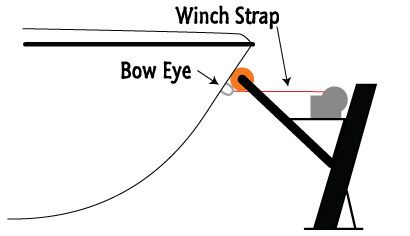
Install The Guide Poles
- Install the guide poles at the rear of the trailer, and adjust them in until they touch the rub rail. We like to install them a few inches foreward of the rear crossmember, on the bottom of the aluminum I-beam with two u-bolts per guide pole.
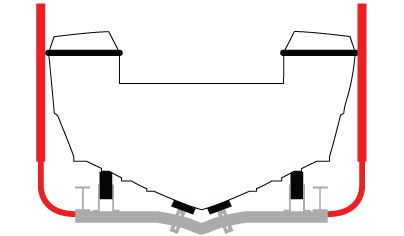
- This image is a great example of a situation where you would need to position the bunks on the trailer to utalize the lifting strakes instead of the chines, for optimal fitment.
- The next time you launch your boat, back the trailer down the ramp slowly and take a mental note of how deep the trailer is in the water when the boat is at that sweet spot and it's just about ready to float off the trailer. The reason you want to do this is so you'll have an idea of how far to back the trailer in the water when you're ready to load the boat back on the trailer. I just just pay attention to where the surface of the water is in relation to the top of my trailer fenders. Yes, when the tide changes so does that sweet spot you're looking for, and now that your trailer is set up right for your boat, the only remaining factor that seperates the pros from the Joes, is trailer depth.
- ~P.S. While loading the boat, you'll know you have the correct trailer depth when there is some resistance between the boat and the trailer bunks. You should need to apply some throttle to get the boat to drive up the last few feet. The goal is to be at or within about one inch of the trailer bow stop.
- ~~P.S.S. Your wife is perfectly capable of backing up the trailer or driving the boat up. You just need to show her how it's done, and a great time for that class to take place is the middle of the night when you both have all the time you need.